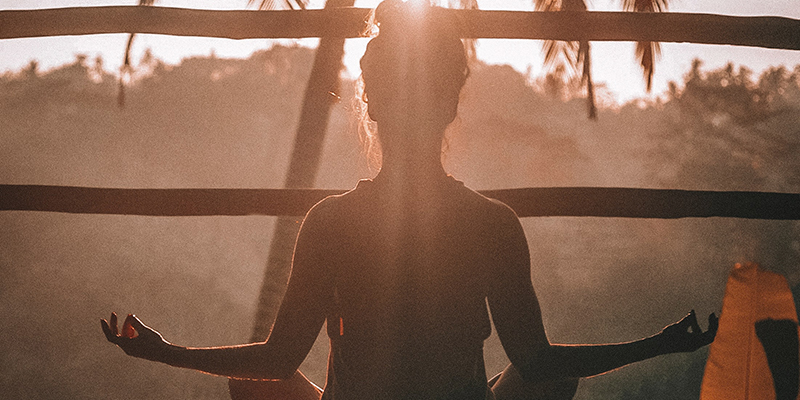
Calm the mind
If you’re one of the few people who has been sceptical about meditation, then this expert guide might transform your thinking.
The current lockdown is the perfect opportunity to tune in with yourself and ease any anxiety you might have due to the current global pandemic.
Seen by many as an essential part of a self-care routine, there is no one right way to meditate, it doesn’t require equipment and you don’t even necessarily need to sit in complete silence. You also don’t have to spend an hour of your day trying to force the thoughts out of your mind, in fact you can embrace those thoughts and meditate for only five minutes, if you prefer.
There are a number of other benefits to meditation: it promotes restorative sleep, boosts your mood, improves concentration and strengthens the immune system.
Here yoga, Pilates and fitness instructor at the Monte Carlo Bay Hotel & Resort, Marina Bordet, gives you all the tips you need to get started.
Start by choosing a calm space that’s out of the way. You could make this space exclusively for meditation by adding a little rug, a cushion, a little candle or some incense, for example. Make it a space that you enjoy, so that you’ll want to go and sit there every day to practice.
Although other forms of meditation do exist, the most popular is seated meditation. This puts the focus on the spine, the vertical link between the earth and the sky.
Settle down on the ground, with your legs crossed in the lotus position, and place as many firm cushions or thick books under you as you need to make your hips slightly higher than your knees.
You can also put some cushions under your knees if you feel any tightness. If you’re not comfortable in this position, try sitting on your knees in the Japanese style instead. Lastly, if sitting on the ground is not an option for you, then sit in a chair without resting against the back.
Once you’re seated, make yourself as tall as you can whilst keeping your shoulders relaxed and your stomach soft. Place your hands on your knees, with your palms turned up towards the sky. Gently close your mouth and breathe through your nose.
Start by feeling out all the places you are in contact with the ground: your ankles on the floor, your hips on the cushion. Imagine that all these points of contact are the earth supporting you. Try to use this grounding as a base for establishing a sense of safety and trust.
Next, turn your attention slightly higher, to your abdomen and solar plexus, and try to relax this part of your body. Let your inhalations sink deep towards your pelvic floor, without forcing the breath. Let your exhalations happen naturally, without consciously using your muscles. Your breath is soft, natural, and quiet, like the breath of a sleeping child.
Try to develop a sense of gentleness, compassion, and faith in the future in your solar plexus region.
Lastly, let your attention drift to your heart and sternum. There, focus on a feeling of gratitude. In the beginning, you could choose two things that make you happy, and be thankful for having had the opportunity to experience these things. With practice, you will no longer need to think of these aids, and should be able to feel gratitude more easily.
To finish, share your well-being with those around you. Fill yourself with positive energy as you inhale, and send love and compassion out to the world and the universe as you exhale.
At the end of your practice, you can chant the Om mantra, either by humming the “ommmm” sound out loud, or hearing it in your head. Then, ever so gently, open your eyes again, and maybe yawn or stretch. Try to stay in this moment as long as possible: don’t rush back to your phone too quickly.
Source: https://emirateswoman.com/life/feed/


